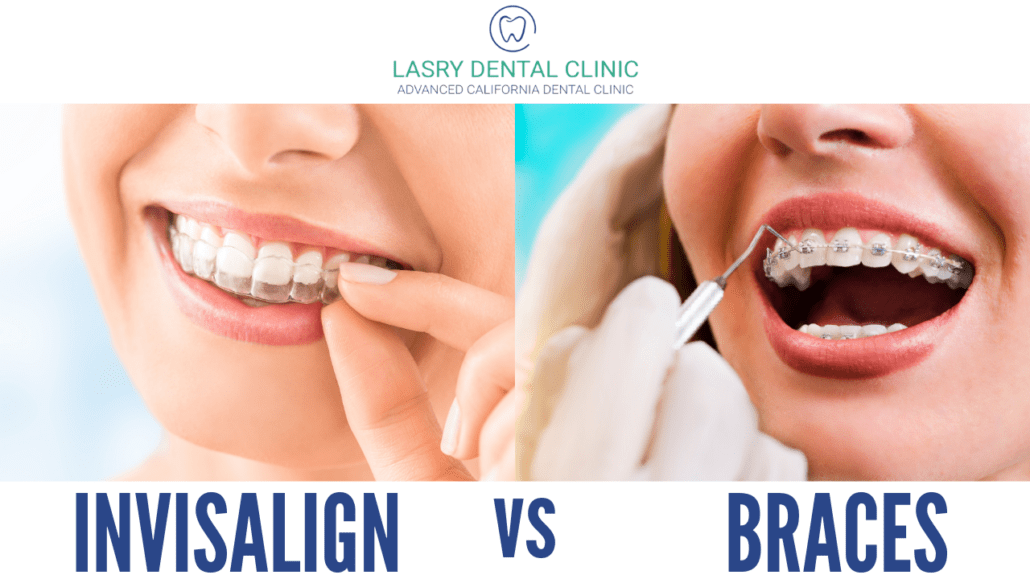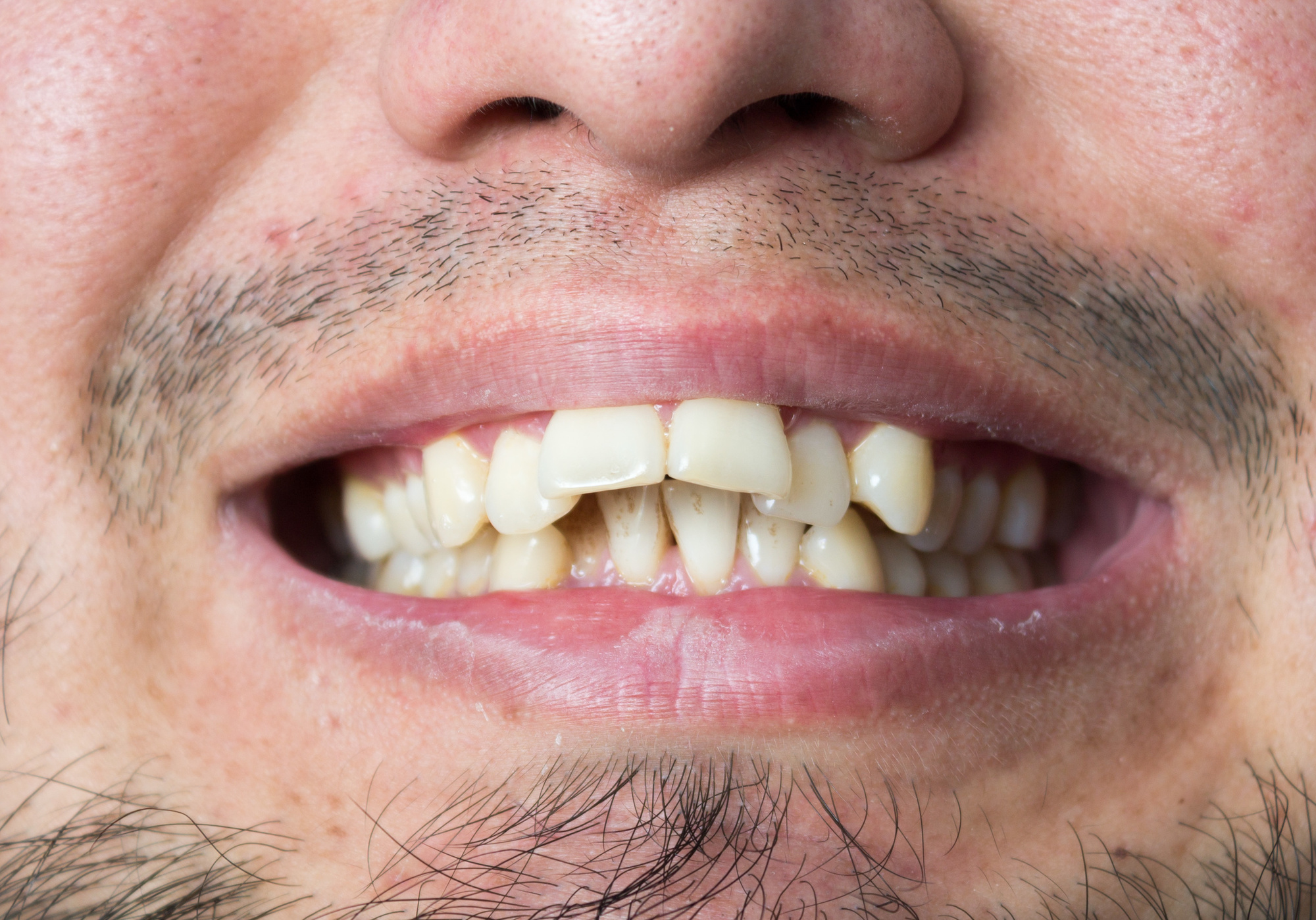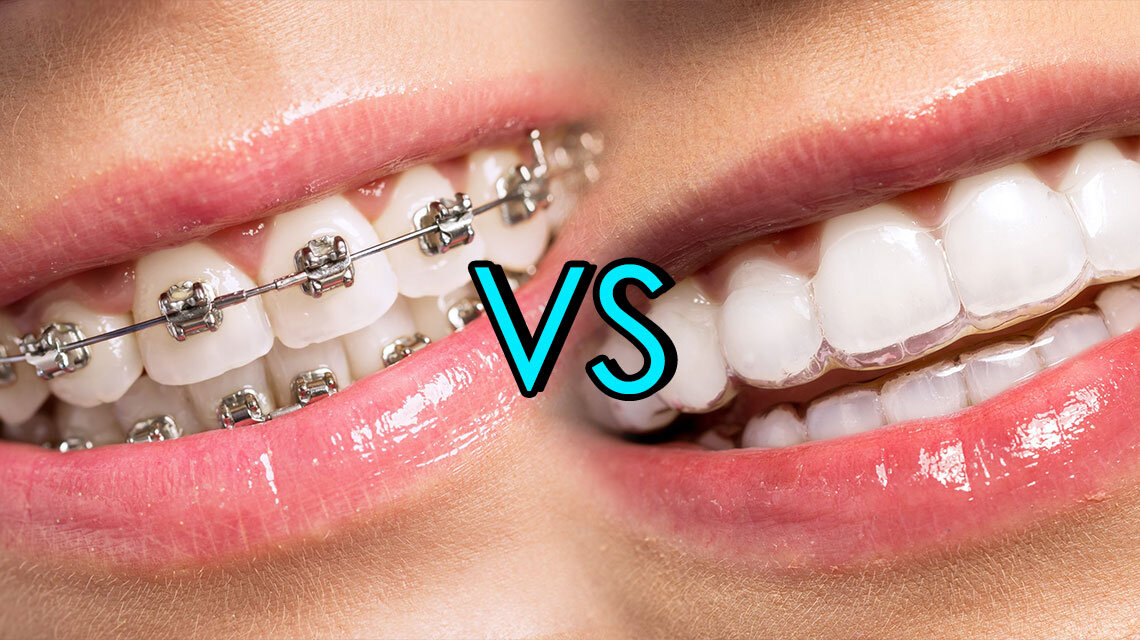Invisalign for Teens: A Modern Solution to Straightening Young Smiles
Invisalign for Teens: A Modern Solution to Straightening Young Smiles
Blog Article
Invisalign vs. Conventional Dental braces: Which Option Is Right for You?
When thinking about orthodontic therapy, the choice in between Invisalign and standard braces presents numerous vital elements that warrant cautious examination. Invisalign provides a very discreet alternative with detachable aligners, while standard braces give a much more noticeable yet reliable service for extreme misalignment. Each choice incorporates unique benefits and disadvantages associated with aesthetics, comfort, therapy duration, and cost. Comprehending these nuances is critical for making an educated decision that straightens with your individual preferences and way of life. The question stays: which alternative will ideal satisfy your orthodontic needs and expectations?
Summary of Therapy Choices

On the other hand, conventional braces are composed of metal braces and cords that are bound to the teeth. This method applies continual pressure in time to attain alignment. While efficient for complicated orthodontic issues, typical braces need regular sees for changes and can pose difficulties in preserving dental hygiene due to the trouble of cleaning around cords and braces.
Both choices have their merits, and the choice commonly rests on particular dental conditions, lifestyle choices, and patient compliance. Inevitably, getting in touch with an orthodontic professional is essential for identifying the most appropriate therapy strategy tailored to private requirements. Comprehending the subtleties of each alternative can significantly influence the general success of orthodontic therapy.
Visual Considerations
A significant variable affecting the selection between Invisalign and traditional braces is the aesthetic charm each therapy provides. Invisalign aligners are crafted from clear plastic, making them essentially unnoticeable when worn. This discreet look is especially appealing to young adults and adults that might really feel self-conscious about their orthodontic treatment. The capacity to keep an all-natural smile throughout the positioning procedure can substantially boost the patient's self-confidence in social and professional settings.
In contrast, typical braces contain steel braces and cords, which can be extra obvious. While developments in orthodontic innovation have actually caused the growth of smaller braces and colored elastics, conventional braces still preserve an even more conspicuous account. For some people, the visibility of dental braces might prevent them from looking for needed treatment.
Inevitably, the option between Invisalign and typical braces may pivot on individual choices concerning appearances. Individuals that focus on discernment usually lean towards Invisalign, while those that are less concerned about exposure might choose typical dental braces. Understanding the visual ramifications of each choice is crucial for making an educated choice that straightens with one's way of living and preferences.
Convenience and Convenience

In regards to benefit, Invisalign aligners are removable, making it possible for patients to enjoy their preferred foods without constraint and maintain ideal oral health. Cleaning and flossing are streamlined, as the aligners can be taken out during these routines, whereas conventional dental braces require mindful navigating around cables and brackets.
In contrast, standard dental braces necessitate regular modifications, making them less convenient for those with hectic schedules. Overall, the comfort and convenience of Invisalign make it an attractive choice for many individuals seeking orthodontic therapy.
Therapy Duration and Efficiency
While both Invisalign and standard braces are effective in dealing with oral misalignments, the period of treatment can vary dramatically in between the two alternatives. Commonly, Invisalign therapy can take anywhere from 12 to 18 months, relying on the complexity of the situation. The clear aligners function by progressively shifting teeth right into their preferred placements, and routine follow-ups with an orthodontist help guarantee progress continues to be on the right track.
In comparison, traditional dental braces often call for a longer commitment, typically varying from 18 months to 3 years. This is because of their set nature Recommended Site and making use of cables and brackets, which can be much more effective for complex cases and serious misalignments (Invisalign). The therapy performance of standard braces is well-documented, as they enable specific modifications and better control over tooth movement
Inevitably, the choice between Invisalign and conventional braces may depend upon both the expected treatment duration and the certain dental concerns available. Consulting with an orthodontist is vital, his response as they can supply customized suggestions based on private needs, ensuring the picked method lines up with desired outcomes and durations.
Price Comparison and Insurance Choices
Price plays a significant duty in the decision-making process for people thinking about orthodontic treatment, whether choosing Invisalign or conventional dental braces. On average, the expense of Invisalign varieties from $3,000 to $8,000, while traditional dental braces typically cost in between $2,000 and $6,000. Aspects influencing these expenses consist of the complexity of the case, the period of therapy, and geographical place.
Insurance policy insurance coverage can dramatically impact out-of-pocket costs. Lots of oral insurance policy plans supply partial protection for orthodontic therapies, but the specifics can differ commonly. It is vital for patients to examine their insurance policy policies to figure out the level of insurance coverage for either alternative. Usually, conventional dental braces may be more often covered by insurance plans contrasted to Invisalign, which some insurance providers categorize as an aesthetic treatment.
In addition, a number of orthodontic methods use versatile layaway plan, making both treatment options a lot more obtainable. Patients ought to ask about possible financing choices and discounts for ahead of time repayments. Reviewing the discover here overall cost, including insurance coverage advantages and repayment plans, is crucial for making an educated choice that straightens with both visual preferences and budget plan considerations.

Final Thought
In summary, the option between Invisalign and traditional braces pivots on numerous variables, consisting of aesthetic preferences, comfort, therapy period, and expense. Invisalign provides a discreet, detachable alternative that assists in oral hygiene and dietary adaptability, while standard braces may be preferable for complicated dental issues and often come with a lower cost point. Inevitably, appointment with an orthodontist is important to examine individual circumstances and establish the most appropriate therapy choice for achieving optimum dental placement.
When thinking about orthodontic treatment, the selection between Invisalign and typical braces offers a number of important variables that merit mindful assessment.Contrasting Invisalign and standard braces exposes distinct therapy options for orthodontic modification.While both Invisalign and traditional dental braces are effective in remedying oral misalignments, the period of treatment can differ considerably in between the 2 alternatives.Cost plays a substantial role in the decision-making process for people considering orthodontic therapy, whether deciding for Invisalign or traditional dental braces.In recap, the choice between Invisalign and typical braces hinges on several factors, consisting of visual choices, comfort, treatment period, and price.
Report this page